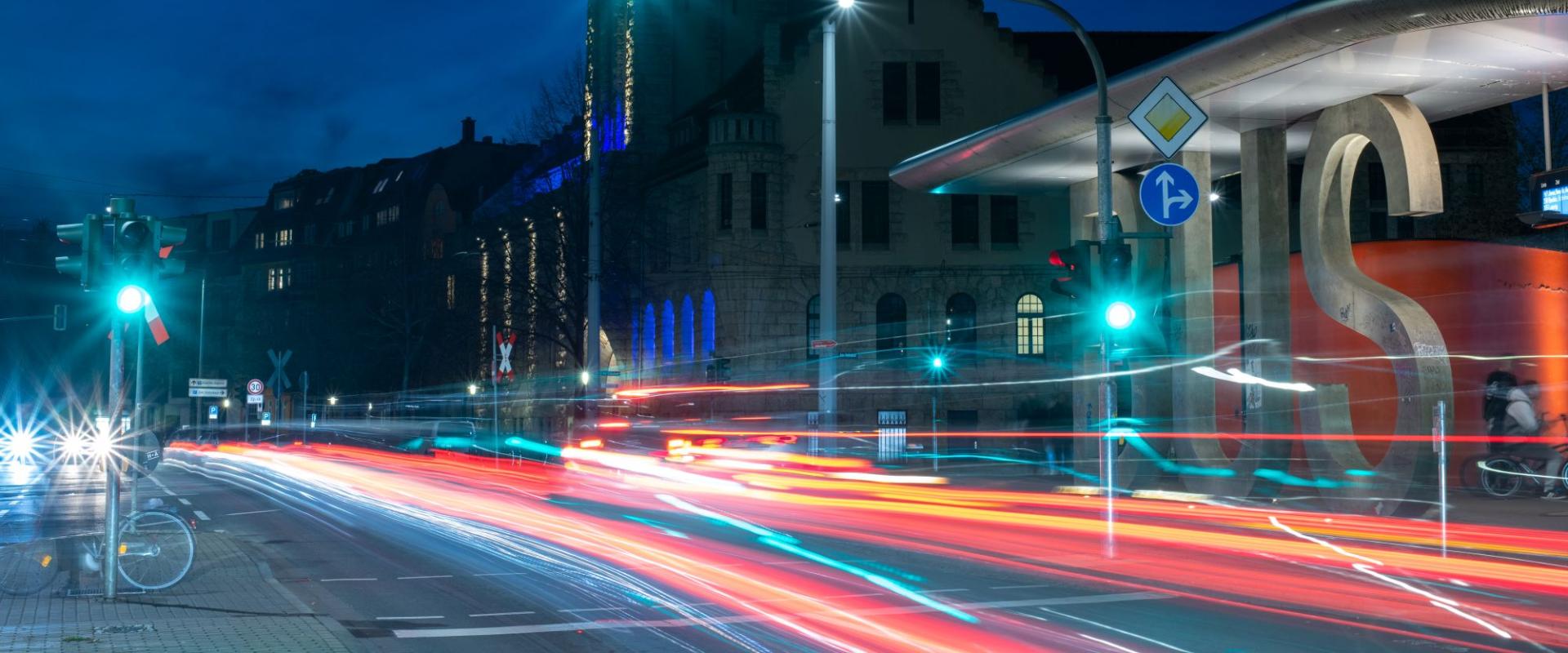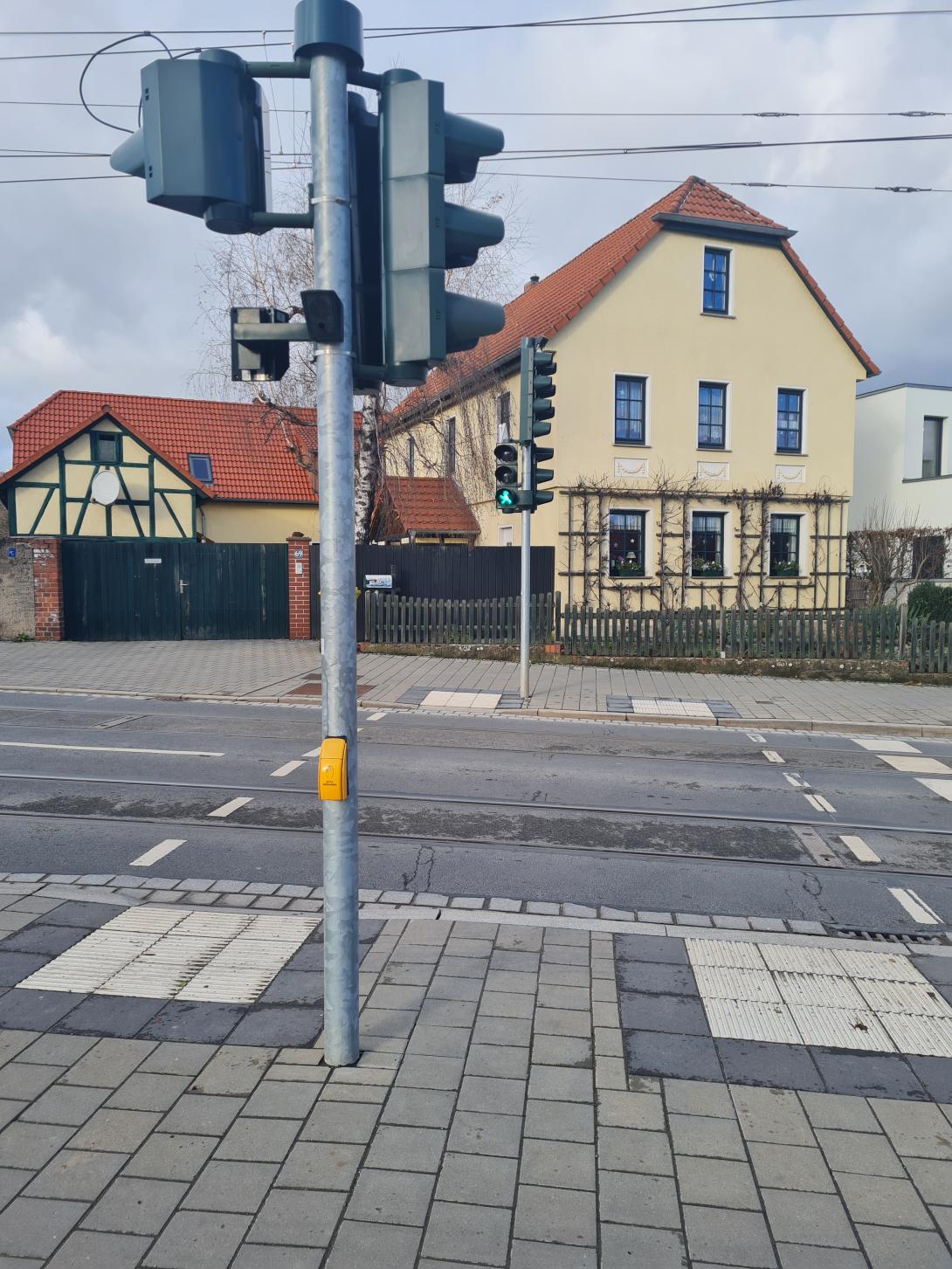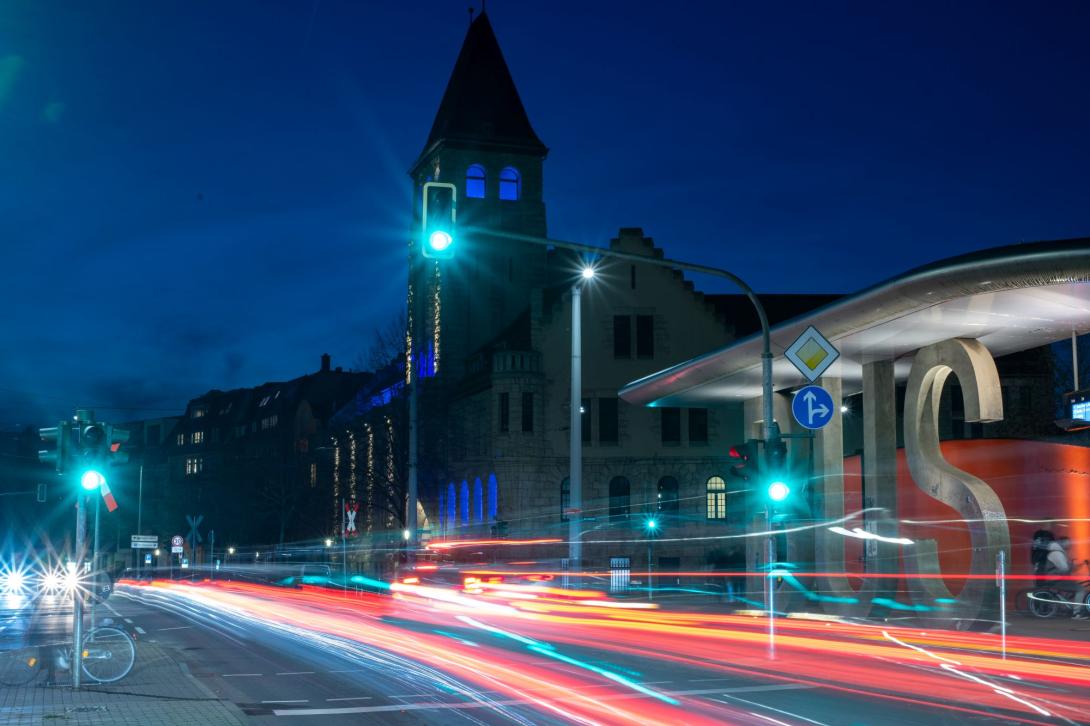
search the site now

The 94 public traffic light systems in Jena - colloquially known as traffic lights - are maintained by the electrical engineering department of Kommunalservice Jena.
We are not only responsible for fault rectification, but also for planning, optimization and maintenance in the interests of efficient and ecological operation.
To enable blind and visually impaired people to participate in road traffic, important traffic lights are equipped with aids for crossing roads. These include lowered kerbs, grooved plates and acoustic and tactile signal heads.
More information in our brochure.
Ongoing traffic is monitored with the aid of a traffic computer.
Report defects to Jena or by e-mail: lichtsignalanlagen@jena.de
If you notice any damage or faults (e.g. damaged buttons due to vandalism or similar), you can report them to us.


The aim is to make urban vehicle traffic safer and more environmentally friendly. This is achieved by
using innovative traffic management systems.
In addition to the existing infrastructure, it is also necessary to expand or supplement system components such as traffic signal systems.
Continuous traffic and environmental monitoring serves as the basis for the dynamic derivation and implementation of traffic control scenarios. Technology was renewed for this purpose. The traffic computer was updated and 40 traffic lights are now equipped with new controls.
Many non-discriminatory crossings were created, cyclists were included in junction traffic, the acceleration of local traffic was adapted in many places, the outdoor facilities were converted to 1-watt technology, the 'green wave' was revised and much more.
In addition, the turnaround time in the daily program has been shortened, which in turn saves waiting time for all participants. In many places, the switch was made to demand control in the off-peak period.
Nevertheless, a traffic light is always a compromise for all parties involved and primarily serves to improve road safety and ensure the orderly flow of traffic. Of course, optimizations continue to take place.

With the help of the "Low CO2 mobility - environmentally oriented traffic management Thuringia" funding program from the Thuringian Ministry for the Environment, Energy & Nature Conservation, the "Environmentally oriented traffic management Jena (UVM-J)" project was implemented over a period from 2019 - 2021.

A traffic light crossing is designed to bundle at least two (usually more) competing traffic flows and alternately provide time for a safe crossing.
Traffic events are detected on the basis of induction loops, proximity sensors and classic push-buttons. However, these only represent part of what is actually happening. It is like looking at the world through a slit. As a result, the current circuit diagram has so far been decided on the basis of manual requirements and indications.
By incorporating real objects with direction and speed into the traffic light control system, intelligent, automatic and needs-based switching is possible.
A new type of technology with enormous potential for optimizing road traffic flows.
Do you have any questions? You will find important information below.
One or more cameras record the flow of traffic in the crossing area. An on-site computer system specially trained in object recognition analyzes the data and automatically detects waiting pedestrians. This information is transferred to the traffic lights and a clearance is requested.
The system recognizes objects that usually occur in road traffic and assigns them to the appropriate categories. For example, it can distinguish between cars, bicycles, buses, pedestrians and others. Based on the number, speed and direction of movement of the classified objects, the system decides which direction of traffic should currently have priority.
The release time is the time during which a traffic flow is displayed as green. By detecting objects and their direction of movement, the system can react to special situations. For example, an approaching line of cars can be waited for before the pedestrian is given clearance if this can reduce overall congestion times. In the same way, the green light for pedestrians can also be extended after school classes or people with restricted mobility have been detected.
By the way: Did you know that the pedestrian green is a start signal? If you have just entered the street and the signal changes to red, you still have enough time to cross as a normal pedestrian before vehicle traffic is cleared. This applies to every traffic light in the city.
Data protection and privacy are GDPR-compliant. This is ensured by the following measures, among others:
Thermal imaging cameras and conventional camera technology are used for recording.
The new technology will be used gradually as part of a funding program and will initially be limited to pedestrian traffic lights. We will then evaluate the technology. If its use proves successful, it could conceivably be extended to complex junctions.
You have probably already noticed that when you are at a pedestrian crossing and request the green light, you wait a long time even though there is hardly any traffic on the road. Or you are driving in a large group of vehicles and have to stop again and again, which can also harm the environment.
The aim of this new control system is not only to distribute the limited release windows available in a "cycle" more fairly, but also to adapt them dynamically to the traffic. This means that the clearance times can be dynamically extended if necessary, for example when a large crowd is approaching or when very slow people are crossing the road. In future, the traffic lights will also be able to react more quickly to a lower traffic density, reducing the waiting time for people crossing the road.
Yes, the project is being funded in accordance with the Federal Ministry of Digital and Transport's Digitalization of Municipal Transport Systems Directive. The technology required for this was put out to public tender and will be retrofitted to selected traffic lights in the city of Jena from May until the end of 2024.
When introducing new technology, unforeseeable challenges can arise, especially in the initial phase. Be it that setting parameters need to be readjusted or detection difficulties need to be resolved. In such a case, the traffic light "falls back" to its familiar switching pattern without intelligence. For this reason, the familiar "yellow pushbuttons" will continue to receive the green requests.